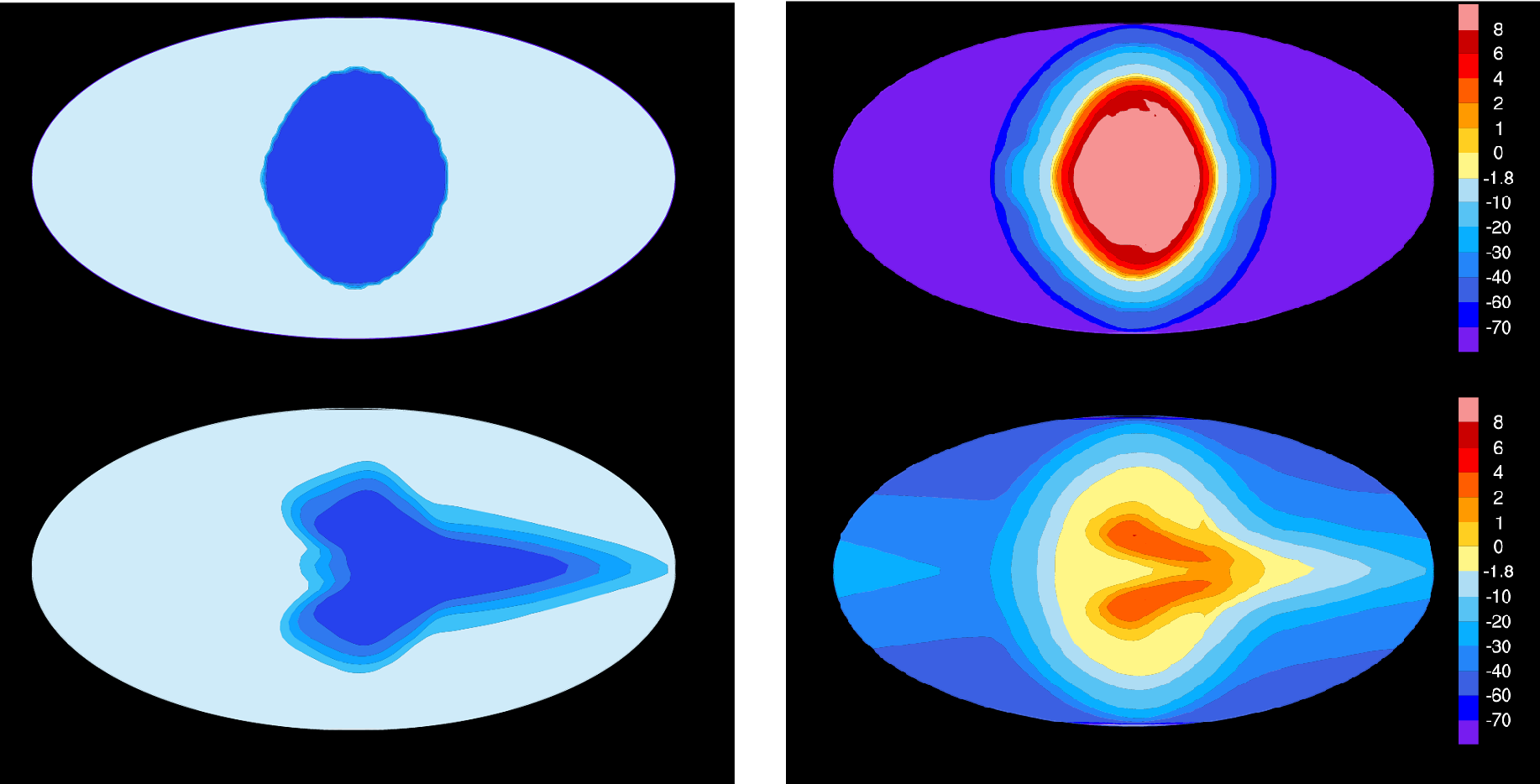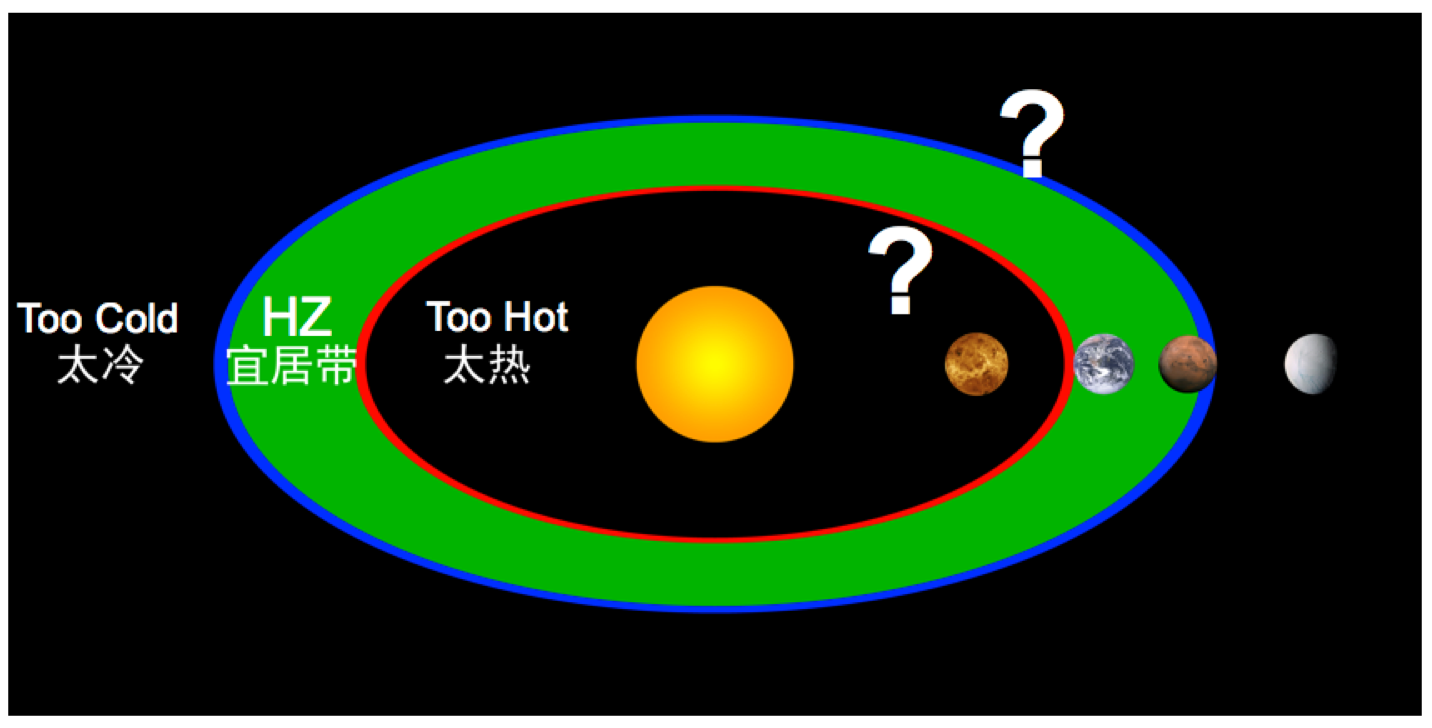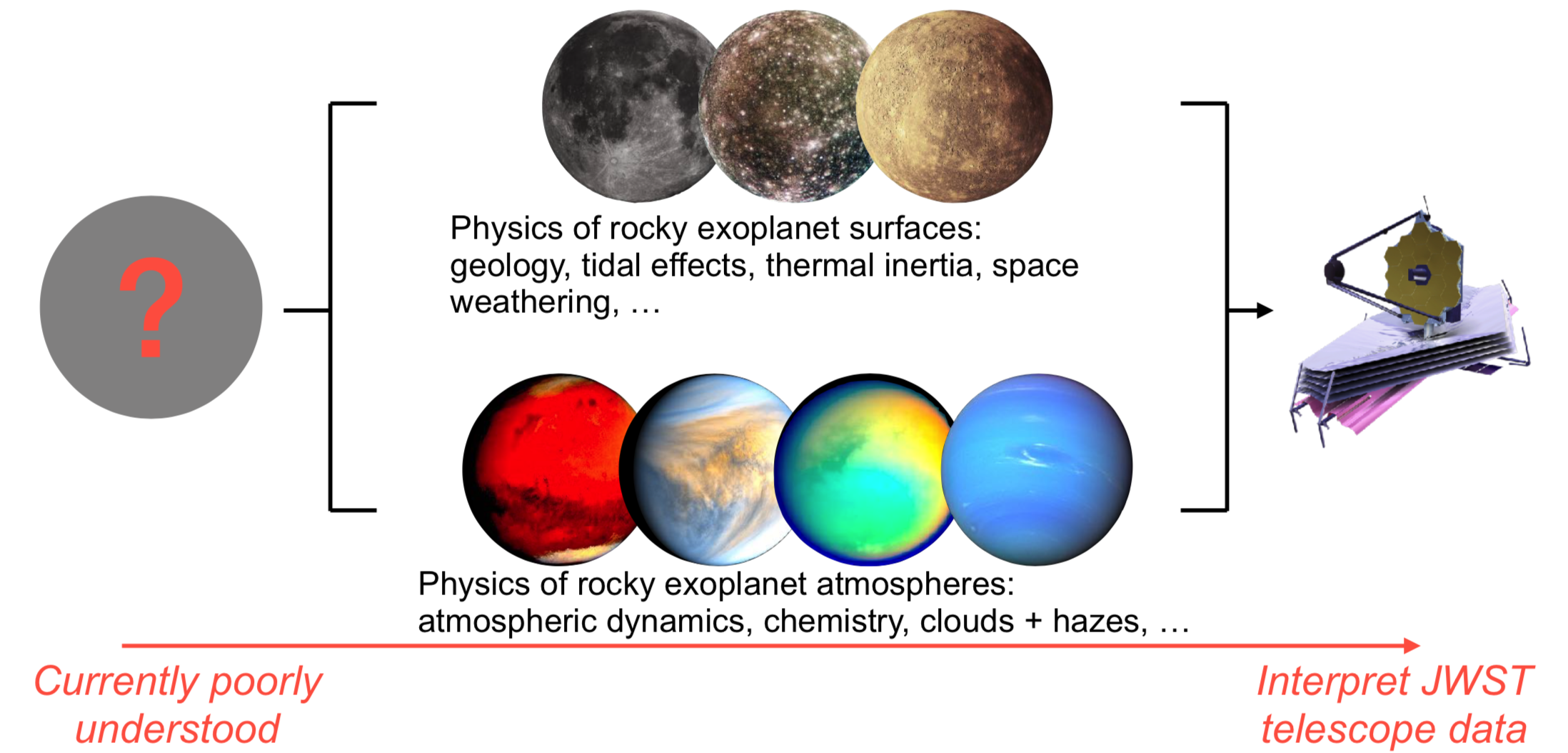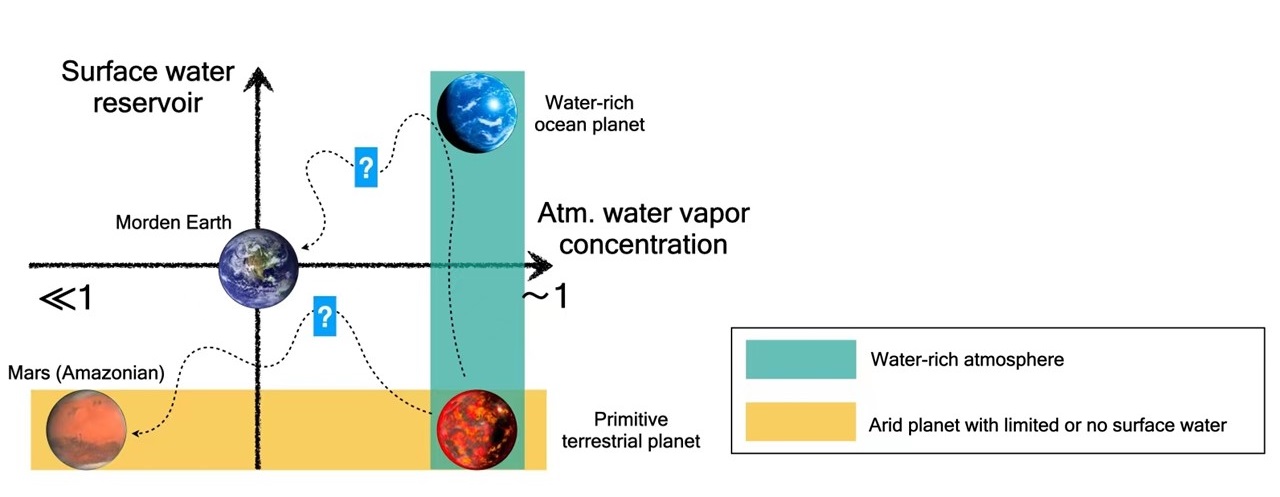Planetary atmospheres study atmospheric physics, atmospheric chemistry, atmospheric motion, oceanic dynamics, ice motion, climate characteristics, and the evolutionary history of other planets beyond the Earth. For example, did Venus have water in its early days, and did water escape later? Is the early climate of Mars suitable for life? How is the evolution process of the Earth different from that of Mars and Venus? Why is the Hadley circulation of Venus and Mars so wide? Why do the atmospheres of Jupiter and Saturn have so many eddies and jets? Why is Pluto's glacial surface so young? What is the future evolutionary fate of Earth and ice satellites? And, more other interesting questions. These are all scientific issues of concern to us.
Extrasolar planets are one of the most rapidly developing research fields in recent years. Since the discovery of the first exoplanet in 1995, scientists have confirmed thousands of exoplanets, and there are many exoplanets waiting for us to explore in the future. The discovery of exoplanets shows us the diversity of planets, whose atmospheric compositions and many other characteristics are completely different from those of the planets in the solar system. What determines the differences in the atmospheres and climates of different planets? How are the atmospheres, clouds, ices, and oceans of exoplanets different from those of Earth? Which planets have climate conditions suitable for life? Does life exist on exoplanets? All these are very fascinating and important scientific issues.
In the Department of Atmospheric and Oceanic Sciences of Peking University, several faculties are working on planetary atmospheres, as shown in the following. The research areas include:
(1) Planetary Atmospheres
(2) Planetary Climate and Habitability
(3) Atmosphere, Ocean, Ice, and Climate Dynamics
(4) Planetary Characterizations and Biosignature Detections.

Yongyun Hu
My research interests cover modern climate, paleoclimate, and planetary climate, aiming to study the basic and frontier issues in these fields. Our fundamental understanding of the Earth’s climate is to regard the Earth’s climate system as a unified dynamical system, which is influenced by the solar radiation energy, the Earth’s internal activities, and the dynamic evolution of the fluid sphere to maintain the habitability of the Earth. We use a combination of observational, theoretical, and numerical methods to study Earth’s climate system.
If we think of Earth as a member of the solar system, we may wonder why it has maintained a habitable climate while Venus and Mars are not. There is evidence that both Venus and Mars had liquid water in their early days. If so, Venus must have experienced a greenhouse escape, while Mars became trapped in ice. Studying planetary climate evolution can help us understand Earth's historical climate evolution. The search for extraterrestrial life has always been the dream of mankind. At present, more than 4,000 extrasolar planets have been discovered, and 10-20 of them are considered to be possible habitable planets. The discovery of extrasolar planets poses a major challenge to our traditional conception of the formation of the sun. How to determine the habitability of exoplanets, and how to detect exoplanets? That's the scientific question that we've focused on in the last 10 years.
Home page: https://faculty.pku.edu.cn/yyhu/

Figure caption: Simulated climate of tidally locked aqua-planets orbiting around low-mass stars. Left panels: sea ice (white) and ocean (blue). Right panels: surface air temperature (^oC). Upper row: atmosphere-only without ocean heat transport. Lower row: coupled atmosphere-ocean simulation.
Jun Yang
In the solar system, Venus is too hot, Mars is too cold, and only Earth has liquid water on the surface. What determines this feature? Did Venus and Mars have liquid water in the past, such as during the early period after planetary formation? What determines the different evolution processes of these planets? Beyond the solar system, thousands of exoplanets have been confirmed. Among them, about 10-20 are potentially habitable. The main target of exoplanet missions is to find other habitable or potentially habitable planets and even life on other worlds. Our group is focusing on the atmospheric, oceanic, and ice motions and the climates of different types of planets. The main goal is identifying the locations of the inner edge and the outer edge of the habitable zone, which is critical for finding potentially habitable planets and is useful for exoplanet mission designs. Planetary climate and habitability is a complex function of various factors, such as stellar energy, stellar spectrum, planetary size, planetary gravity, planetary orbit (rotation rate, obliquity, eccentricity, etc.), atmospheric composition, surface pressure, greenhouse gas, cloud, dust, aerosol, ocean depth, seawater composition, land-sea distribution, sea ice, ice sheet, and many other factors.
Home page: https://faculty.pku.edu.cn/junyang/

Figure caption: Habitable zone (HZ) concept. Where is the inner edge of the HZ? Where is the outer edge of the HZ? What determines the width of the HZ?
Daniel Koll
I originally grew up in Tanzania, Germany, and Kenya. I went on to study Physics and Philosophy at Harvard, and did a PhD in climate science and extrasolar planets at the University of Chicago. After that I was a postdoc at MIT, supported by a fellowship from the James S. McDonnell Foundation. I now work at Peking University in Beijing, China.
Why do different planets have such different climates? My work tries to explore this question from a range of angles, with a particular emphasis on the atmospheres of exoplanets and climate change on Earth. Find out more by checking out my recent publications.
Home page: https://danielkoll.github.io/

Figure caption: What determines the different atmospheric compositions and masses of different planets/moons? How to detect the atmospheres?
Feng Ding
My research interest is to use simple ideal models to study the important issues of planetary atmosphere and climate. Currently, I focus on how the water cycle in the climate system of terrestrial planets affects the long-term evolution of climates, such as the habitability of planets, especially when the water content of planets is much higher or lower than the Earth and other special conditions.
Home page: http://faculty.pku.edu.cn/dingfeng/zh_CN/index.htm

Figure caption: Terrestrial planets tend to lose surface water because of hydrogen escape to outer space and crustal hydration. The evolutionary path for these types of planets generally changes from a water-rich to a water-depleted condition if formed in a water-rich environment.
Faculty Position in Planetary Atmospheres
We sincerely invite applicants with backgrounds in planetary atmospheres to apply for a faculty position in our department. For more details, please see /rczp/index.htm
Postdoc Position in Planetary Atmospheres
We invite applicants with backgrounds in atmospheric science, oceanic science, climate science, planetary science, computational science, or astronomy to apply for a postdoc position. Fellows are expected to pursue research on planetary atmospheres, climates, or exoplanets in collaboration with at least one faculty mentor. Potential mentors include Profs Yongyun Hu, Jun Yang, Daniel Koll, and Feng Ding. All research will be conducted in English, and the position requires no Chinese language skills. Individuals will have excellent opportunities for professional development, including working with PKU’s world-class students and joining international collaborations. The fellowship duration is a minimum of two years, with the potential for extension.
The salary may be competitive with the US or Europe postdoc level; the exact salary depends on the research background. It could be combined with the fellowship of PKU’s prize Boya postdoctoral fellowship or the National Innovation postdoc. PKU staff benefits include subsidized housing and schooling for individuals with children (kindergarten, primary, and middle school). For more details, please feel free to contact us via email.
